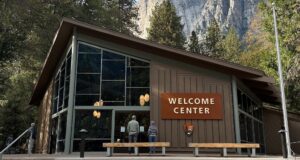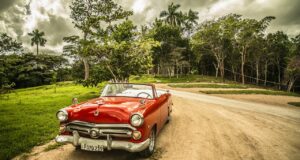Within the realms of art and architecture the word style can refer either to the values followed while considering what will be created, or to the physical techniques employed during the actual process.
In order to begin a study of the Mission style, one needs to go all the way back to 18th century Spain. At that time the desire of the king and founding Spanish priests was to emulate notable buildings from within their homeland.
Here in unsettled America they were limited to the construction materials that existed naturally on the mission sites. As in the architecture of Spain, the California missions exhibited a strong Roman influence in terms of their design and building techniques. The Priests, who were not academically trained in design, did their best to recreate the buildings that were depicted in the Spanish paintings of the time. During the design phase for Mission Santa Barbara, works of 1st century B.C. Roman architect Vitruvius were consulted.
 While the twenty-one mission complexes built between 1769 and 1823 are each unique unto themselves, they all employed the same building techniques. All things considered, the Padres did an amazing job, and it was all achieved through the helpful efforts of unskilled laborers. These factors coupled with the use of only three basic elements — timber, stone, and adobe — all contributed to this rustic yet graceful style.
While the twenty-one mission complexes built between 1769 and 1823 are each unique unto themselves, they all employed the same building techniques. All things considered, the Padres did an amazing job, and it was all achieved through the helpful efforts of unskilled laborers. These factors coupled with the use of only three basic elements — timber, stone, and adobe — all contributed to this rustic yet graceful style.
In the late 1870s an illustrator named Henry Chapman Ford, who had settled in Santa Barbara, began creating a portfolio of paintings to do with the California Missions. His renderings, done in both watercolor and oil, were in part responsible for renewed interest in the missions, and what is now known — especially in architecture — as the Mission Revival style.
This trend also carried over into art, furnishings, and stained glass as a number of national publications began to glorify the style. The movement was most popular during 1890s and lasted until about 1915. Where furniture is concerned, the mission revival style coincided with the international Arts and Crafts movement. Both styles advocated simple forms, use of the best materials, and above all traditional craftsmanship. Sharing the same values at essentially the same time, it is sometimes hard to differentiate between these two styles.
 A visit to any one of the California missions is always a great experience. These are some of the oldest buildings that are still in existence here in the west. Much can be learned about art and architecture each time that you go. Many of the mission churches still function as Catholic parishes and some — which have been beautifully restored — are designated as California State Historical Parks.
A visit to any one of the California missions is always a great experience. These are some of the oldest buildings that are still in existence here in the west. Much can be learned about art and architecture each time that you go. Many of the mission churches still function as Catholic parishes and some — which have been beautifully restored — are designated as California State Historical Parks.
Photos of Mission San Juan Bautista by Sal Maccarone
Mission San Juan Bautista, the 15th mission, is both a functioning parish and a state park. This is the closest mission to where we live, 100 miles, and is a wonderful example. Make sure that you go at a time when the chapel is open because it is full of period paintings, sculpture, and furniture.
The mission settlements are situated approximately thirty miles apart from each other — what used to be a one day journey by horseback. Folklore has it that the Padres sprinkled mustard seeds along the historic California Missions Trail so that it would be marked with bright yellow flowers.
Sal Maccarone is a foothills-based artist and craftsman




